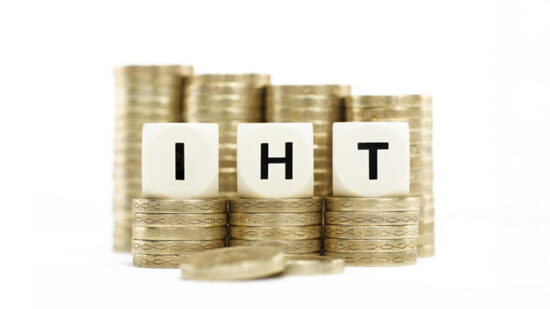Sterling
Not the most exhilarating week for sterling, with volumes subdued and a gradual sell off towards the close. The UK is not providing any news to influence the pound leaving movement dictated by events elsewhere. This week’s July Monetary Policy Committee (MPC) meeting may change this with the decision on more Quantitative Easing (QE) the main focus. A close vote last time could lead to a move this time, so watch the wires at noon on Thursday.
Going forward to next week, the MPC meeting will be closely watched. The voting was tight last month on whether to increase QE, Governor Mervyn King voted for it, so there is a good chance it might squeeze through this time. Look out for an increase of up to £50 bn. Sterling remains range bound against other majors. Any increase in QE could have the short term effect of weakening sterling, and the move by the EU to help recapitalise their banks has given the Euro a boost versus the Pound. We expect sterling to hold steady versus the Dollar, with a $1.5500 to $1.5750 range persisting, but the new euro initiative should see the pound drift lower towards €1.2250.
US dollar
Like sterling, the US dollar is a hostage to events in Europe, being pushed around by the trials and tribulations of the ongoing debt crisis. Data releases continue to point to an economy that is grinding along slowly but is not picking up. Further measures to stimulate the economy are likely from the Federal Reserve at some stage, but for all its problems, the dollar looks a safer bet than its major competitors. In these troubled times it will continue to benefit from its safe haven status, and despite poor data and potential further Quantitative Easing, we see the greenback holding its own.
This week should prove more interesting, being a short week due to the 4th July holiday, and the important Non-Farm Payrolls numbers on Friday. Other data includes the ISM Non-Manufacturing PMI and Factory Orders. Unless these are way off of analyst’s forecasts, the dollar should continue to maintain its current levels particularly against sterling. Against the euro, we foresee some weakness due in part to the EU initiative at the summit on Thursday/Friday. It looks like the EU are finally starting to come up with ideas that will hopefully start to instil confidence in the currency, and we see a move up to $1.2750 through next week.
Euro
Another week – another Summit. This was the 19th meeting of European leaders to once again try to thrash out a solution to the expanding debt crisis in Europe. Markets are now much better at managing expectations, and despite protestations of doom and gloom from several leaders (Italian President Monti said at the weekend there were only 4 days left to save the euro) who are looking for help, the markets expect nothing fundamentally new. So it was a nice surprise to get something mildly positive, although how long this last remains to be seen.
The summit news saw a sharp rise in the Euro to $1.2620 versus the US Dollar and €1.2365 against Sterling before easing. This move has also taken the pressure off of the Sovereign Bond markets, as it will make them slightly more attractive to private investors. Will it be enough to turn the tide in Europe? In itself, probably not, but it’s a good first step. It should see the euro hold its own and perhaps make some further ground through the early part of this week. We see euro moving to retest its highs of $1.2750 vs US Dollar and €1.2250 vs Sterling this week – although as we’ve seen in the past, such positivity is often short-lived.
New Zealand Dollar
The New Zealand Dollar ended last week stronger across the board after European leaders agreed to allow bailout funds to be used to provide recapitalisation finance direct to the banks. The dollar put on about 1 cent versus the US Dollar to 0.7945 and nearly 2 cents against Sterling to trade around 1.9550. This meant that investors were less risk averse and the likes of the NZD benefitted sharply.
Overall the NZD should hold up well against its peers. Commodity prices are stabilising, the economy is in good shape relative to its peers, it has attractive real yields and barring another European ‘accident’, the currency should move ahead in the near term.
Australian Dollar
The Australian Dollar ended last week lower against sterling in what was a quiet trading session with no important economic releases to give the market direction. Investors are now looking towards next week’s Reserve Bank of Australia (RBA) statement on interest rates. The RBA have said that they will ‘only really ease with further unsettling news from Europe’ and with the EU looking to ease the tension in the Euro Bond markets, it is hoped that the bad news may be over for a while.
Where does all this leave the Aussie? Markets are already pricing in a cut in rates, be it July or August. Commodity prices have stopped falling and are basing out at the moment, so the negative drivers are easing. Given this we see some upside potential for GBP/AUD in the weeks ahead, and a move back below A$1.5000 area versus sterling is possible in the short term.
Canadian Dollar
Data was non-existent last week, save for the monthly GDP growth figure out on Friday that did little to influence the direction of the CAD. Rates remained fairly stable, against sterling – barely a 130 point range all week- and this doesn’t look like changing anytime soon. The main drivers of the CAD in the short term are the oil price and any potential US Quantitative Easing that may occur, and it may be worth looking at these more closely.
Currency movement against sterling should continue to be subdued in the short term. However the news out of the EU has been more positive and the CAD could weaken against the euro in the week ahead as investors tentatively go back into the currency. Expect the C$1.5930 to C$1.6090 range to persist for now, with a bias to the downside.
USD/CAD has fallen sharply following the news from the EU summit which has seen a boost in ‘risk’ assets at the expense of the safe haven dollar. Support is at C$1.0164, resistance around C$1.0350.
Chinese Yuan
The yuan has appreciated versus the dollar through last week tracking the euro’s gains against the greenback as hopes rose for a solution to the debt crisis.
Expect the USD/CNY rate to continue to track the EUR/USD price in the coming days. Gains will be limited and prone to sharp reversals. On balance the rate is likely to trade below 6.3500 but above 6.3200.
Japanese Yen
The yen finished last week close to its opening levels against sterling after its sharp appreciation mid week was reversed after the EU announcement on the bailout conditions for the banks. Risk was back in vogue and the yen lost ground as investors perceived that it was safe to go back into the likes of the euro and sterling. It was a heavy week for economic releases, but these were overshadowed by sovereign events in Europe as were all the major currencies.
The yen continues to be a major safe haven currency, and this will override the economic considerations for the time being. Europe has dominated the direction of the yen for some time now, and while last week’s new pronouncement from the EU will weaken the currency in the short term, it remains to be seen if it will be the long term solution. For next week we see the GBP/JPY rate weakening to 128.00 as the EU announcement continues to weigh on the currency.
South African Rand
The rand strengthened sharply last week on the back of hopes a solution to Europe’s debt crisis may be imminent – helped by domestic data suggesting that another interest rate cut will not be forthcoming.
GBP/ZAR is now trading close to support levels at R12.80 and may test lower in the coming week – depending on EUR movements. However, as the gains are largely down to uplift on the news out of Europe, any change of tune on the continent will see this rapidly reversed.
For more currency data and information on how to assist your clients with their international money transfers, please visit the International Adviser Currency Zone powered by Moneycorp.








